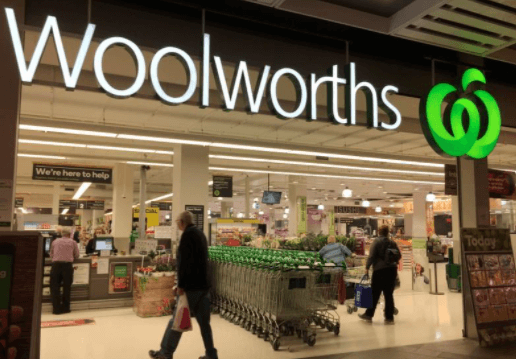How Woolworths Loblawsgray

Woolworths and Loblaw are two of the largest supermarket chains in Australia and Canada, respectively. Both companies have a long history of providing customers with high-quality products at competitive prices.
In recent years, Woolworths and Loblaw have been making significant investments in private label brands, technology, and customer experience to stay ahead of their competitors.
One area where both companies have focused their attention is on developing private label brands that offer customers unique products at lower prices than national brands. By investing in these brands, Woolworths and Loblaw are able to maintain a competitive edge over other supermarkets while also increasing profit margins.
Additionally, both companies have invested heavily in technology to improve the overall shopping experience for their customers. From mobile apps to self-checkout kiosks, these technological advancements make it easier for customers to find what they need quickly and efficiently.
With these efforts, Woolworths and Loblaw are positioning themselves as leaders in the retail industry while also staying relevant in an ever-changing marketplace.
Read also: Huawei H1 2.2b Covid19kirtonreuters
Overview of Woolworths and Loblaw
Woolworths and Loblaw are two prominent retail companies that have established a significant presence in the global market, serving as key players in the industry with their diverse range of products and services.
Both companies have been operating for over 100 years, with Woolworths originating from Australia and Loblaw from Canada.
When it comes to market share, Woolworths dominates the Australian retail sector with an estimated 38% share of the grocery market compared to Loblaw’s 28% share of the Canadian grocery market.
However, both companies face similar challenges such as increasing competition, changing consumer preferences, and adapting to digitalization.
Despite these challenges, Woolworths and Loblaw continue to innovate and expand their offerings while maintaining their position as leaders in the retail industry.
Private Label Brands
Private label brands are becoming increasingly popular among retailers such as Woolworths and Loblaw, offering benefits for both customers and the companies themselves.
For customers, private label brands often provide high-quality products at a lower price point compared to national brands.
Meanwhile, private label brands help retailers remain competitive by allowing them to differentiate their offerings and increase profit margins through greater control over production and distribution processes.
Benefits for customers
Customers can enjoy various advantages when shopping at Woolworths and Loblaw’s Gray, such as discounts on products and loyalty rewards programs.
These grocery store chains offer a wide range of private label brands that are often cheaper than their branded counterparts, providing customers with an affordable option without compromising on quality.
Additionally, the product variety available at these stores is extensive, catering to different dietary requirements and preferences.
Loyalty programs also incentivize customers to continue shopping at these stores by offering exclusive discounts and rewards for repeat purchases.
Overall, shopping at Woolworths and Loblaw’s Gray provides customers with cost-effective options while still maintaining high-quality standards in their products.
How it helps the companies remain competitive
Maintaining competitive advantages is essential for grocery store chains to succeed in the market and attract new customers.
Both Woolworths and Loblaw have implemented effective marketing strategies and optimized their supply chain management to remain competitive.
Woolworths’ ‘Fresh Food People’ campaign highlights their commitment to providing fresh produce, while Loblaw’s ‘President’s Choice’ brand offers a unique range of products that are exclusive to their stores.
Additionally, both companies have invested heavily in technology, such as online ordering systems and mobile apps, which enhances customer convenience and satisfaction.
In terms of supply chain management, Woolworths has streamlined its operations by implementing a centralized distribution system, while Loblaw has made efforts to reduce waste through sustainable sourcing practices.
By continuously improving these key areas, both companies can maintain their competitive edge in the ever-changing grocery industry.
Technology Investments
This discussion centers on technology investments made by retailers, particularly in the form of mobile apps, self-checkout machines, and other technology initiatives.
These tools have been devised to streamline in-store operations and enhance customer experience.
The adoption of these technologies is rapidly changing the retail landscape and has become a key factor for retailers looking to stay competitive in the market.
Mobile Apps
The mobile apps developed by Woolworths and Loblaw provide convenient and efficient ways for shoppers to browse products, make purchases, and track their orders on-the-go. These apps offer a range of features such as barcode scanning, personalized recommendations, and easy payment options. They also allow users to create shopping lists, view current promotions, and access their loyalty rewards program. The user engagement in these apps is high due to the ease of use and the ability to customize the experience according to individual preferences. The mobile apps have revolutionized the way people shop by providing convenience at their fingertips anytime, anywhere.
Self-Checkout Machines
Surprisingly, self-checkout machines have become a common sight in supermarkets and retail stores across the world, allowing customers to scan and pay for their purchases without the assistance of a human cashier.
These machines work by using barcode scanning technology to identify each item that is scanned by the customer, who then places the items in a bagging area on the machine.
The machines also use weight verification technology to ensure that all items are accounted for and correctly weighed.
While self-checkout machines can be convenient for customers who want to avoid long lines or interact with fewer people during the COVID-19 pandemic, there are concerns about theft and accuracy with these machines.
Despite these concerns, many retailers continue to invest in self-checkout technology as a way of improving efficiency and reducing labor costs.
Other technology initiatives
In addition to self-checkout machines, various other technology initiatives are being implemented in retail stores worldwide to enhance customer experience and streamline operations. Digital innovation is at the forefront of these efforts, with retailers investing in technologies such as augmented reality, mobile apps, and artificial intelligence.
These innovations allow for personalized shopping experiences that cater to individual preferences and needs. Sustainability efforts are also a key focus, with retailers implementing green technologies such as solar panels and energy-efficient lighting systems to reduce their carbon footprint. Additionally, many retailers are utilizing data analytics to better understand consumer behavior and optimize store layouts for increased efficiency.
All these technological advancements aim to provide customers with a seamless shopping experience while reducing environmental impact – something that resonates deeply with those who value freedom from unnecessary waste and inefficiencies.
Customer Experience
Despite the fast-paced world we live in, customers still value a seamless and personalized experience, making customer experience a vital aspect for both Woolworths and LoblawsGray to focus on.
Personalization is one way that these retailers can provide a unique experience to their customers. By using data analysis and machine learning algorithms, they can tailor recommendations based on individual preferences, purchase history, and behaviors.
In addition to personalization, omnichannel integration also plays an important role in enhancing the customer experience. This allows customers to seamlessly switch between online and offline channels while shopping, providing them with convenience and flexibility.
By investing in technology initiatives that cater to these aspects of the customer journey, Woolworths and LoblawsGray are able to create a competitive edge in the retail industry by meeting the evolving needs of their customers.
Growth and Expansion Strategies
This subtopic delves into the growth and expansion strategies of Woolworths, Loblaws, and Gray. These companies have established their dominance in their respective domestic markets, but they also recognize the need to expand beyond their borders to sustain growth.
Thus, this discussion will explore how Woolworths, Loblaws, and Gray plan to pursue both domestic growth and international expansion while maintaining their competitive advantages in the retail industry.
Domestic growth
One potential avenue for growth in the domestic market for Woolworths and Loblaw is through expanding their online presence and improving their e-commerce capabilities.
As digital transformation continues to shape the retail landscape, companies need to adapt to new consumer behaviors by providing a seamless online shopping experience.
This can be achieved through various strategies such as offering personalized recommendations based on purchase history, implementing efficient delivery options, optimizing mobile experiences, and incorporating social media integration.
By investing in these areas and capturing a larger market share of online shoppers, both Woolworths and Loblaw can increase revenue streams while catering to the needs of consumers who prioritize convenience and flexibility in their shopping habits.
International expansion
Expanding into international markets presents a potential avenue for growth for major retailers in the grocery industry. Woolworths and Loblaw Companies Limited are two examples of companies that have successfully expanded their operations overseas through franchise partnerships and cultural adaptations. Woolworths has expanded to New Zealand, India, and South Africa through joint ventures with local partners. They have also adapted their offerings to cater to local tastes and preferences. On the other hand, Loblaw has established its presence in countries like Trinidad and Tobago and Jamaica through franchising agreements with local entrepreneurs. These strategies have allowed both companies to tap into new markets while minimizing risks associated with operating in unfamiliar territory. However, it is important for them to continue adapting to the cultural nuances of each market they enter as these can greatly impact consumer behavior and ultimately affect sales performance.
Challenges and Future Outlook
The challenges faced by Woolworths and Loblaw include adapting to changing consumer preferences and increasing competition from online retailers, as evidenced by the fact that e-commerce sales in Australia grew by 57% in 2020.
In addition to these challenges, both companies must also navigate future challenges such as rising costs due to inflation, maintaining supply chains amidst disruptions caused by natural disasters or political instability, and meeting sustainability goals amid growing concerns about climate change.
Another market trend that could further impact the industry is the rise of plant-based diets and alternative proteins, which may require significant changes to existing product lines and supply chains.
Finally, as more consumers prioritize convenience over brand loyalty, Woolworths and Loblaw will need to continue investing in digital strategies like mobile ordering and delivery services to stay competitive.
Conclusion
Woolworths and Loblaw are two retail giants that have remained relevant in the ever-changing market. They have both invested heavily in technology to improve their customer experience, with private label brands being a significant part of their growth strategy. However, they also face challenges such as increasing competition and changing consumer behavior.
Symbolism is an effective tool in conveying complex ideas or emotions without explicitly stating them. In this case, the two retail giants symbolize perseverance and adaptability. Despite facing numerous challenges over the years, Woolworths and Loblaw have managed to survive by evolving with the times. Their investments in technology signify their willingness to embrace change and stay ahead of the curve.
In conclusion, Woolworths and Loblaw have set a benchmark for other retailers to follow through their unwavering commitment to providing quality products and excellent customer service. The symbolism behind these companies’ success lies in their ability to adapt to changes while remaining true to their core values.
As they continue to face new challenges, it is essential for them always to keep an eye on emerging trends so that they can remain relevant in the market.




